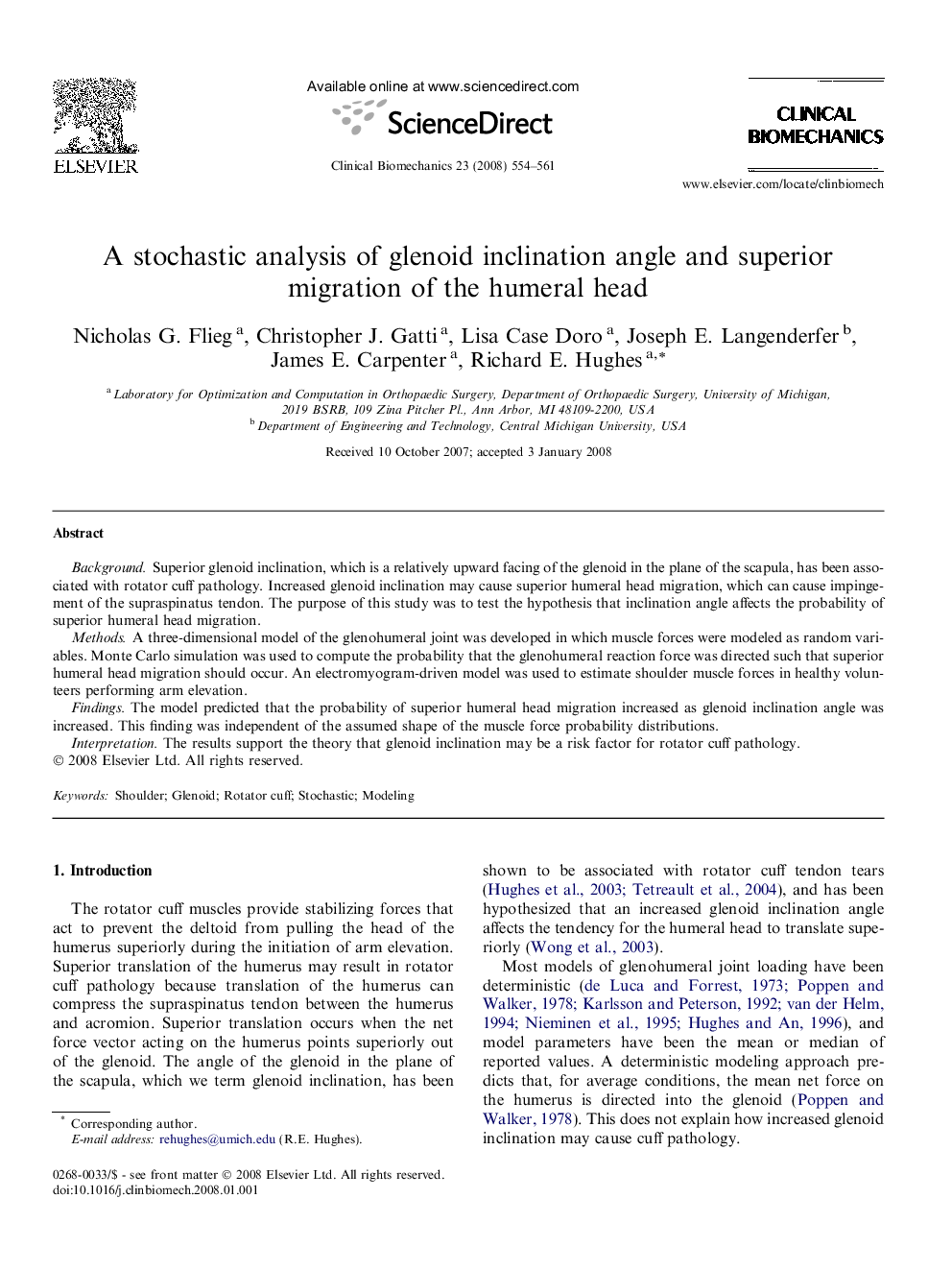| Article ID | Journal | Published Year | Pages | File Type |
|---|---|---|---|---|
| 4051461 | Clinical Biomechanics | 2008 | 8 Pages |
BackgroundSuperior glenoid inclination, which is a relatively upward facing of the glenoid in the plane of the scapula, has been associated with rotator cuff pathology. Increased glenoid inclination may cause superior humeral head migration, which can cause impingement of the supraspinatus tendon. The purpose of this study was to test the hypothesis that inclination angle affects the probability of superior humeral head migration.MethodsA three-dimensional model of the glenohumeral joint was developed in which muscle forces were modeled as random variables. Monte Carlo simulation was used to compute the probability that the glenohumeral reaction force was directed such that superior humeral head migration should occur. An electromyogram-driven model was used to estimate shoulder muscle forces in healthy volunteers performing arm elevation.FindingsThe model predicted that the probability of superior humeral head migration increased as glenoid inclination angle was increased. This finding was independent of the assumed shape of the muscle force probability distributions.InterpretationThe results support the theory that glenoid inclination may be a risk factor for rotator cuff pathology.
